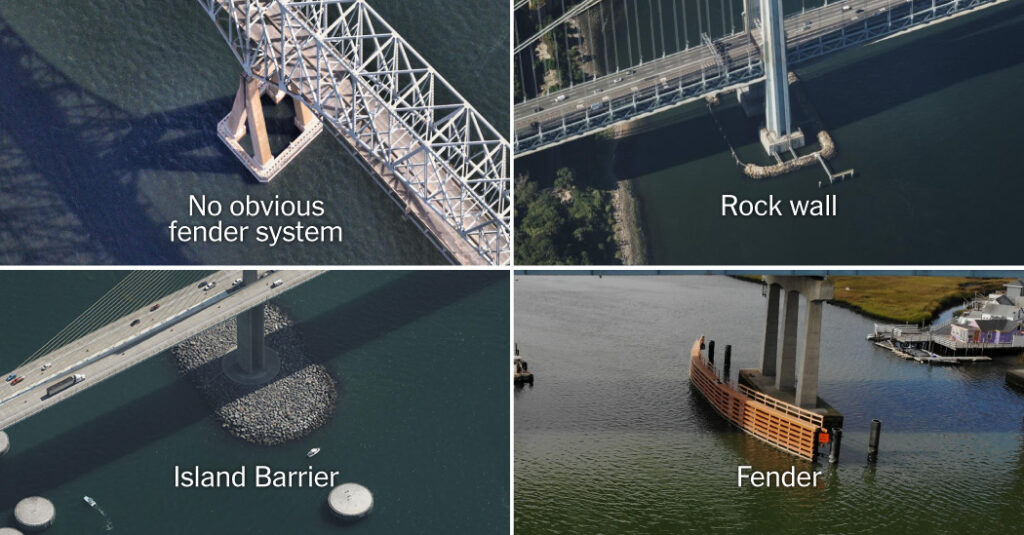The Francis Scott Key Bridge did not have an obvious fender system, or protective barriers, to redirect or prevent a ship from crashing into the bridge piers.
The New York Times; aerial image via Nearmap
Engineers point out that some other bridges have more robust barriers. The Verrazzano-Narrows Bridge in New York City has rock walls surrounding its piers.
The New York Times; aerial image via Vexcel Imaging
Island barriers were installed around the Sunshine Skyway Bridge piers in Tampa Bay, Fla., after a ship crash caused the span’s collapse in 1980.
The New York Times; aerial image via Vexcel Imaging
Even smaller bridges like this one near Cape May, N.J., have fenders.
The New York Times; image via Creative Composites Group
In bridge engineering, fenders can be anything from simple pyramids of rocks piled around the pylons to major concrete rings padded with slats of wood, designed to shield the bridge’s supports from damage by water or collisions.
While a full determination is not yet possible, some engineers told The Times that the collapse of the Key Bridge might have been avoided if its piers had more effective barriers.
